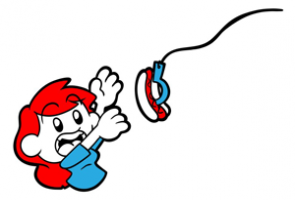One of the less desirable things about the copywriting business is knowing that the vast majority of what we write will go unread by all but a very small percentage of any audience. It’s a sad but true fact of life for those of us who go out of our way to do good things with words.
The upside, though, is that there are ways to get past this and at least attract the attention of a few more readers. Here are a few things you can do to get the attention of a larger percentage of your audience with your opening line.
#1 – Present a Problem That Begs a Solution
All products and services exist for a single purpose: to solve an existing problem. If you lead with a question that confronts readers with the problem, it forms a point of relatability that you can use as a springboard to lure them in.
Why is airfare to India so high this year?
Why are most organic cleaners so ineffective?
Why are your tomato plants not flourishing this summer?
In each instance, the question appeals to a specific group of people and zeroes in on a point of frustration that a large percentage of them have experienced or are experiencing right now. You really want to target that latter group because they are the ones looking for information and advice right now. You don’t want them to bookmark the page; you want them to read it and take action on it right now.
#2 – Lead with a Compelling Question
When your opening line or headline poses a question to the audience, you have a great chance to pique peoples’ curiosities and subsequently get them to read and hear your entire message.
Your question should relate to the reader, not the product. Here’s what I mean by that:
Product-based question: Is your car getting the most miles it can to the gallon?
Reader-based question: Tired of throwing money away on gas?
The first example deals with the problem or “pain point,” which is, in and of itself, a solid marketing strategy. As an opening line, however, it needs to have a more personal element. It needs a high “me” factor in the mind of the reader.
Most people are far more likely to read a piece that they perceive to be about themselves than they would be to read something about a product. Pose a question to your readers about something that matters to them, but be sure to include them in the equation.
#3 – Get Controversial
Your opening line does not need to be a question. It can just as easily be a blunt statement that is designed to elicit a reaction. That reaction needs to be a combination of curiosity mixed with whatever other emotion is appropriate to the subject.
This approach works well if you are dealing with subjects where people feel like they’ve been wronged in the past or have had a hard time finding a product or service in your niche that has really delivered the goods before. Here are a few generic examples:
Before you get ripped off by your mechanic again, read this.
There’s a reason why your last relationship failed.
Don’t get cheated by dirty-dealing contractors ever again.
If your product or service falls anywhere within the realm of these problems, you are bound to hook more readers if you simply pour that tiny bit of salt on the wound. The message here is, “Yeah, this happened, but it doesn’t have to again.” It’s a powerful way to compel people to keep reading.
#4 – Keep Your Questions and Ideas Open-Ended
As a final note, it’s important that no matter how your opening line is phrased, it leaves room for the reader to think or imagine what comes next. You accomplish this by not leading with questions that can be answered “yes” or “no” and also by keeping the actual solution to the problem purposely vague.
An opening line or headline that leaves room for an easy resolution will leave readers thinking that they really don’t need to read any further. Be aware of how important it is to leave your readers with questions in their minds from the moment they start to read your copy.
